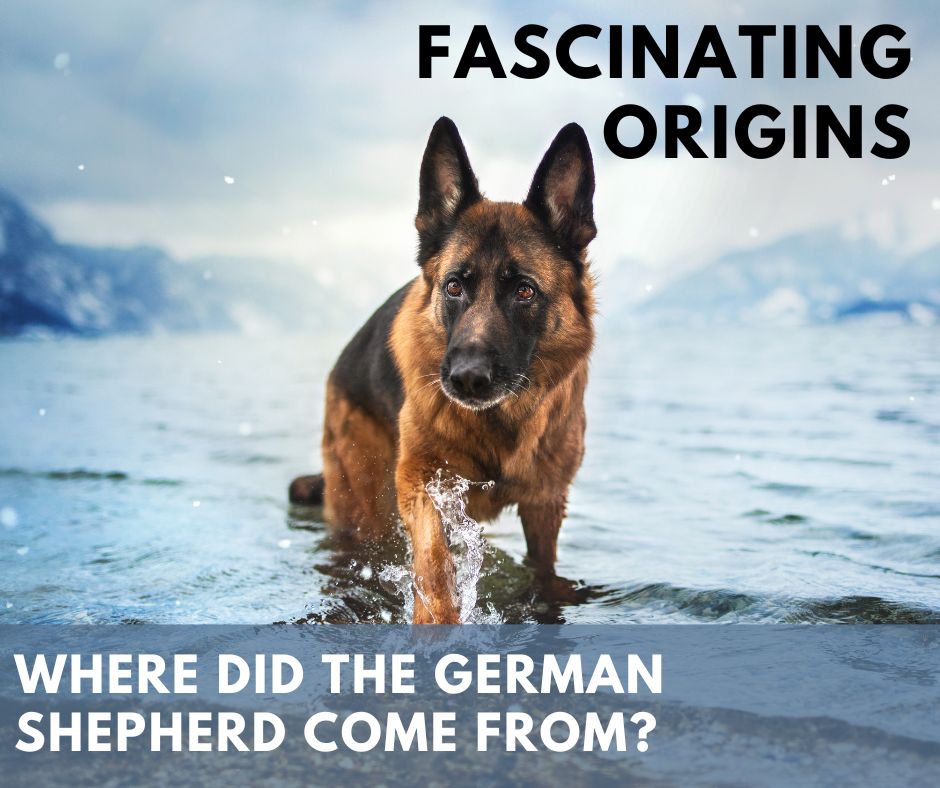Introduction to the German Shepherd: A Breed Like No Other
Hey there, fellow German Shepherd enthusiasts! I’m Jo, your guide on this captivating journey into the history of our beloved breed. With over 20 years of experience as a devoted German Shepherd owner, I’ve had the privilege of witnessing their brilliance firsthand. But have you ever found yourself wondering, ‘Where did the German Shepherd come from?’
This very question ignited a passion within me, propelling me on a fascinating expedition into their past, unearthing the secrets and stories that shaped these extraordinary dogs. Now, I’m thrilled to share these intriguing insights and historical wonders with all of you.
Why Understanding the German Shepherd’s History and Origin Matters
You might wonder, “Why bother with history? I just want to know how to care for my furry friend!”
Well, understanding the roots of the German Shepherd can give us incredible insights into their behaviour, traits, and unique abilities. It’s like solving a puzzle that connects us to our faithful companions on a deeper level.
Unveiling the Journey: A Preview of What’s Ahead
Before we dive into answering the burning question of where did the German Shepherd come from? let me guide you through what’s in store. We’ll be travelling through time, exploring key figures, breeding programs, and the impact that wars had on the breed.
We’ll also examine the German Shepherd’s modern roles and the challenges they face today. So, fasten your seatbelts, and let’s embark on this enthralling adventure together.
- Where Did the German Shepherd Come From?: Historical Background
- The Origins of the German Shepherd: Breeding Program and Key Figures
- Max Emil Frederich von Stephanitz: A Visionary Breeder
- Where Did the German Shepherd Come From?: World War I and II Impact
- From War to Stardom: Post-War Popularity and Modern Utilisation
- Understanding the Origins: Navigating Controversies and Challenges
- Where Did the German Shepherd Come From?: Answering FAQs about their Origin
- Reflecting on a Legacy: Conclusion
Where Did the German Shepherd Come From?: Historical Background
The German Shepherd’s journey begins in late 19th Century Germany, where shepherding was a vital occupation. Local farmers and shepherds relied on talented herding dogs to manage and protect their precious flocks of sheep.
The1800s: A Time of Selective Breeding and Innovation
But, as Germany experienced rapid urbanisation, traditional herding practices evolved, and the demand for exceptional herding dogs was on the rise. This era also saw remarkable advancements in science and the use of selective breeding practices in agriculture.
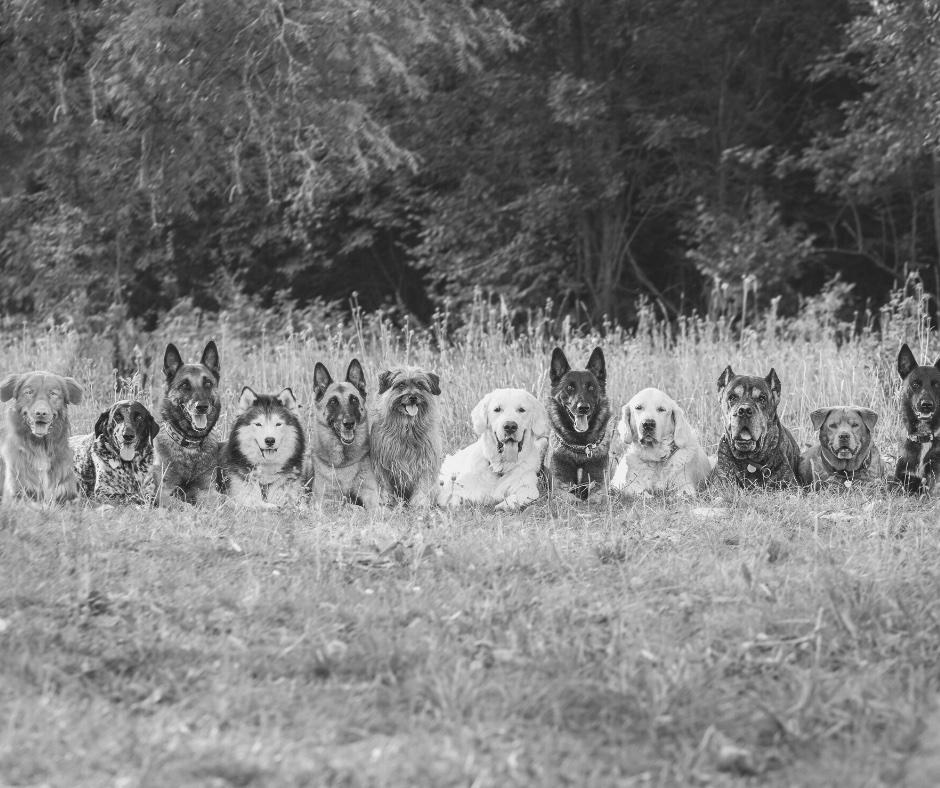
Selective breeding is a technique where breeders purposefully pair breeding animals with desirable traits in the hope of passing down these qualities to future generations. During the late 19th Century, the practice was becoming increasingly popular as people sought to apply similar practices to domestic animals.
Dogs quickly became the focus of attention as people tried to standardise dog breeds. They sought to enhance qualities like size, coat type, temperament, working abilities, and adherence to breed standards.
The Phylax Society’s Role in Shaping the Breed
In the midst of all these changes, the Phylax Society emerged as a pivotal organisation dedicated to preserving and improving German herding dogs. Their main goal was to create standardised breeds with specific working traits.
However, they faced challenges due to the lack of uniformity among the regional working dogs, each showcasing distinct characteristics and appearances.
In the mountainous parts of Germany, shepherds preferred sturdy dogs capable of navigating rough terrains. On the other hand, shepherds on the northern flatlands leaned towards quicker dogs with sleeker appearances and speed.
These disagreements ultimately led to the Phylax Society’s disbandment after just three years. However, their regional breeding practices offered valuable insights into the diverse traits and skills of various dogs – insights that would eventually contribute to the development of the German Shepherd.
As time passed, these regional breeding practices laid the groundwork for the future German Shepherd and set the stage for a pivotal figure – Captain Max von Stephanitz. His role in creating a unified and standardised breed would soon become a legendary chapter in the history of dogs.
Let’s dive deeper into the fascinating world of German Shepherd history, where visionary breeders and exceptional dogs come together to create this magnificent breed!
The Origins of the German Shepherd: Breeding Program and Key Figures
The evolution of the German Shepherd into the dog we know and admire today resulted from meticulous breeding programs and the contributions of visionary individuals.
Max Emil Frederich von Stephanitz: A Visionary Breeder
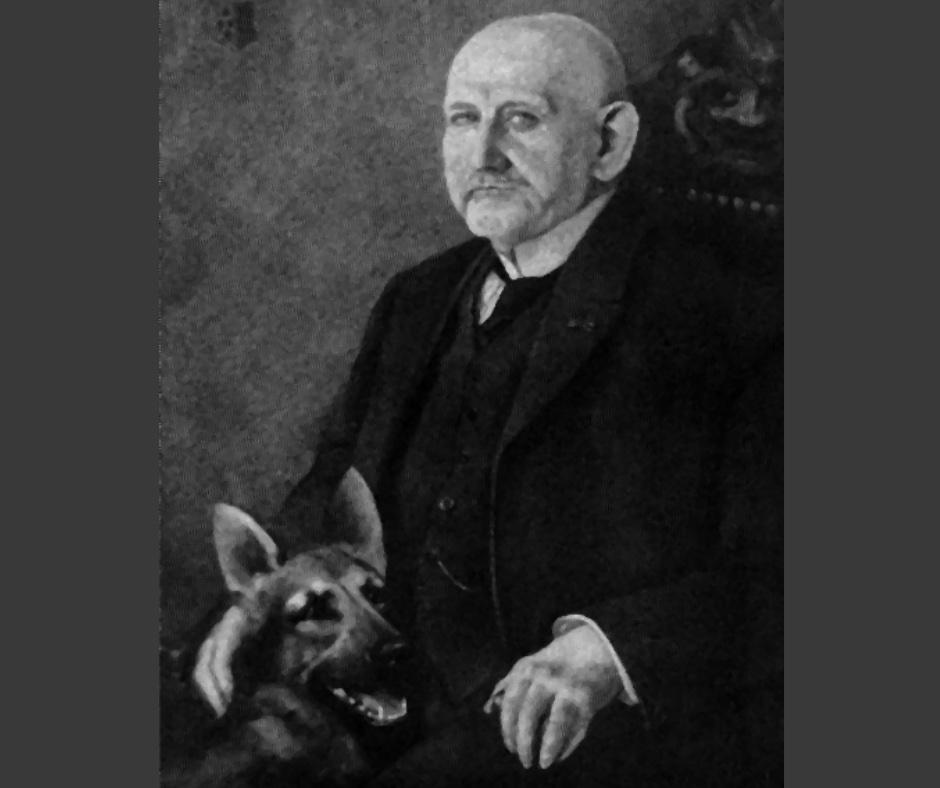
Among the bustling changes, Max Emil Frederich von Stephanitz, a German cavalry officer passionate about dogs, dreamed of developing a superior German herding dog.
As a member of the Phylax Society, he believed that German Shepherds should be bred for their working abilities rather than just looks, though he did have a soft spot for a wolf-like appearance with forward-facing upright ears.
In 1899, Germany hosted its first all-breed dog show. At this momentous event, Max Emil Frederich von Stephanitz encountered a working Shepherd Dog from Thuringia named Hektor Linksrhein. With its wolf-like appearance and good behaviour, this dog embodied everything Max envisioned in a perfect German Shepherd.
Horand von Grafrath: The First German Shepherd
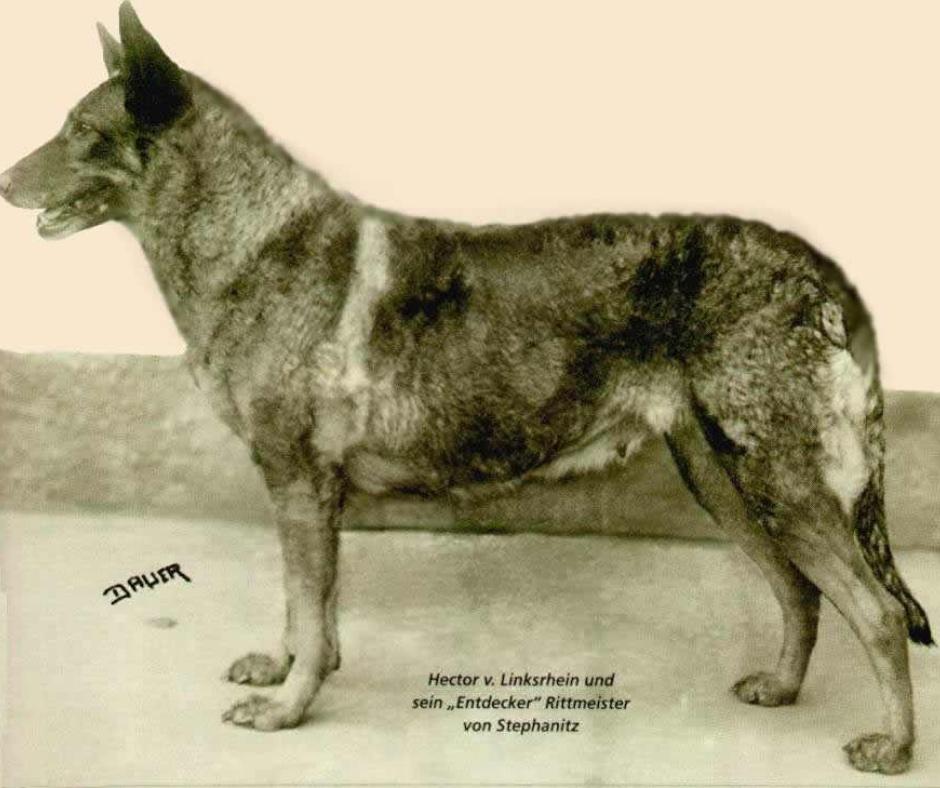
Meet the legendary Horand von Grafrath, the trailblazer and the very first German Shepherd Dog!
When Max Emil Frederich von Stephanitz saw this exceptional dog from Thuringia in Germany, he was instantly captivated by his remarkable traits.
Without hesitation, Max purchased the 4-year-old canine prodigy, who was born in Frankfurt in 1895. Before joining Max’s breeding program, Horand had already been part of an existing selective breeding initiative led by Friedrich Sparwasser of Sparwasser Kennels.
Verein für Deutsche Schäferhunde, or the Society for the German Shepherd Dog.
Later that same year, Max von Stephanitz established the Verein für Deutsche Schäferhunde (Society for German Shepherd Dogs). And guess who claimed the prestigious position of being the first dog registered with this esteemed society? You guessed it right – Horand von Grafrath! This magnificent dog became the very first German Shepherd Dog.
But let’s not forget, Horand wasn’t alone in shaping this exceptional breed. His brother Luchs, parents, and even paternal grandparents played significant roles in the program. These dogs were from the Thuringia region, like Horand and possessed the desired appearance.
However, they were known for their high energy and playful nature, which sometimes made training challenging.
So there you have it, the remarkable tale of Horand von Grafrath – the dog that started it all and the pioneer of the incredible German Shepherd breed!
To delve deeper into the life of Captain Max von Stephanitz, this biography is a great resource.
The Science of Breeding: Techniques and Dogs Used
Max von Stephanitz was determined to craft excellence and embarked on extensive research, selecting dogs from various regions with exceptional working traits. He keenly observed their abilities and strategically incorporated them into his breeding program.
Dogs from Thuringia, Wurttemberg, and Swabia were among those chosen, each bringing unique qualities to the mix. These regional dogs contributed unique traits to the breed, enhancing its adaptability to diverse working environments.
Dogs from Wurttemberg caught Max’s eye due to their calmer demeanour, better movement, and majestic appearance. They were intelligent and easier to train, making them valuable additions to his program.
Meanwhile, dogs from Swabia stood out for their larger size, hardiness, and exceptional skill at protecting sheep from predators. Their versatility and courage added another layer of greatness to the developing breed.
Genetic Mastery: Inbreeding and Genetic Links
Breeders carefully balanced inbreeding to preserve desirable traits while minimising health risks, and they established genetic links to maintain lineage.
Captain von Stephanitz’s approach to breeding was meticulous. To establish and maintain the desired traits, he used selective inbreeding, carefully crossing close relatives to fix the breed’s distinct characteristics and genetic consistency.
While inbreeding had its risks, Max balanced the pursuit of genetic purity with the health and well-being of the dogs, ensuring success in the long run.
Beowulf: The Breakthrough that Defined the Breed
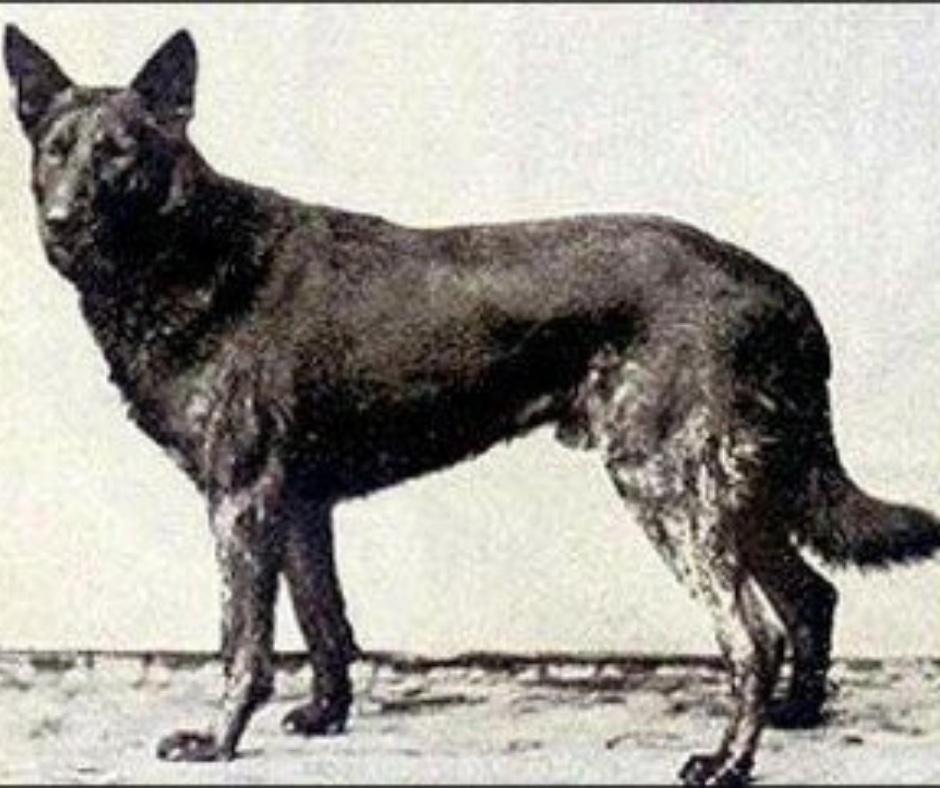
Among the exceptional dogs to emerge from Max von Stephanitz’s breeding program, one name shines bright – Beowulf. Born in 1895, Beowulf embodied the breed’s ideal qualities, from intelligence and trainability to a stunning appearance. His accomplishments in herding, protection, and police work set the standard for future generations of German Shepherds.
Beowulf’s legacy and Max’s relentless pursuit of excellence shaped the German Shepherd into the extraordinary and versatile dog we cherish today. Their combined efforts established the breed’s reputation as a devoted and reliable working dog, capable of serving in various roles, from herding and search and rescue to military and police service.
So there you have it, the tale of visionary breeders, exceptional dogs, and the creation of the remarkable German Shepherd Dog. This extraordinary lineage continues to thrive, and German Shepherds remain treasured companions, thanks to the dedication of these key figures in the breed’s history.
You can learn more about the German Shepherd’s history from the American Kennel Club, which provides a comprehensive outline of their lineage.
Where Did the German Shepherd Come From?: World War I and II Impact
World War I and II were defining periods for the German Shepherd, elevating its status from a working dog to a symbol of courage and heroism. In this section, we will explore how these global conflicts shaped the German Shepherd’s destiny and the pivotal roles they played during wartime.
The German Shepherd in World War I: Messenger, Guard, and Saviour
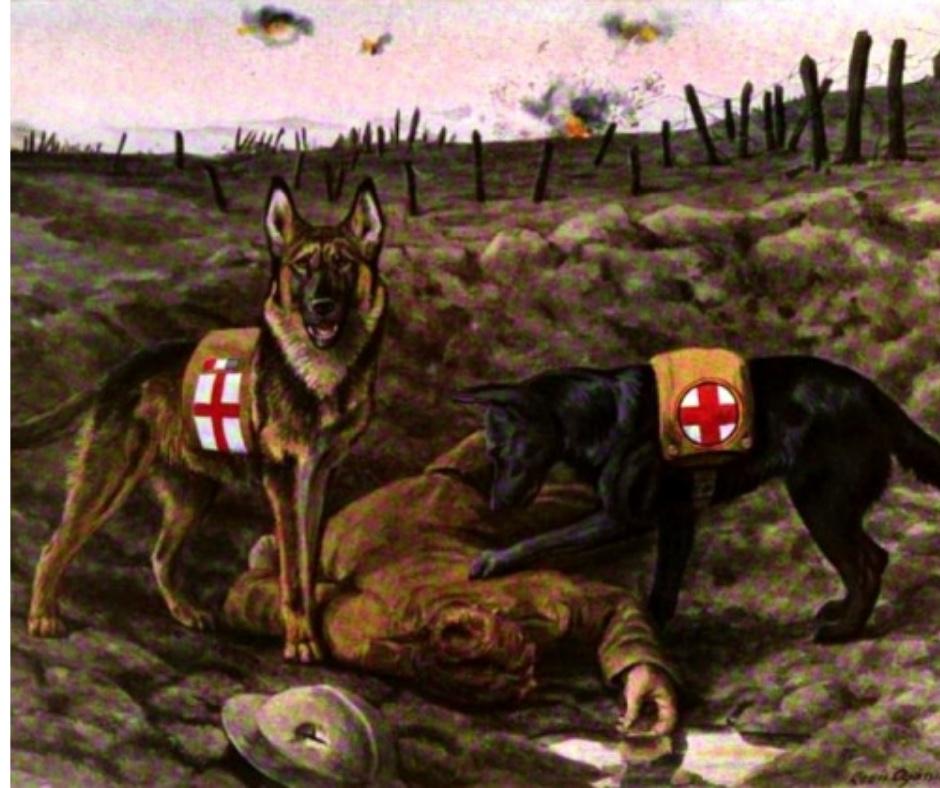
During World War I, the German Shepherd demonstrated its versatility and intelligence on the battlefield. Their exceptional trainability made them ideal messenger dogs, delivering critical communications across treacherous terrains.
Moreover, German Shepherds were deployed as guard dogs, protecting military installations and valuable supplies. Their loyalty and bravery in perilous situations earned them the admiration and respect of soldiers and officers alike.
How World War I Shaped the Breed’s Destiny
The experiences of German Shepherds during World War I solidified their reputation as dependable and steadfast working dogs. The heroic contributions they made during the war increased their popularity in Germany and garnered international recognition, paving the way for their prominence in the years to come.
The German Shepherd in World War II: A Symbol of Courage
World War II further showcased the German Shepherd’s unwavering bravery and commitment. These remarkable dogs served as search and rescue dogs, locating injured soldiers amidst the chaos of the battlefield. They also played a crucial role in assisting wounded soldiers by providing comfort and support during their recovery.
Wartime Challenges: The Breed’s Struggle and Triumph

Despite their bravery and loyalty, German Shepherds faced significant challenges during wartime. The scarcity of resources and the devastation of war impacted breeding programs and led to a decline in numbers. However, dedicated breeders and enthusiasts ensured the German Shepherd’s survival and post-war resurgence through careful breeding practices.
The heroic deeds of German Shepherds during World War I and II solidified their position as remarkable working dogs and loyal companions. Their unwavering dedication and bravery continue to be celebrated, making them one of the most beloved breeds worldwide.
For a deeper understanding of the German Shepherd’s role in World War I and II and their contributions to the war efforts, you may find The US War Dogs Association worth a visit.
From War to Stardom: Post-War Popularity and Modern Utilisation
After the tumultuous years of World War II, the German Shepherd emerged as a symbol of resilience and determination. In this section, we will explore how the German Shepherd’s popularity soared in the post-war era and its remarkable utilisation in various roles, cementing its position as a multi-faceted and beloved companion.
The American Dream: Post-War Popularity of the German Shepherd

Following World War II, American soldiers who had served alongside German Shepherds returned home with a newfound appreciation for the German Shepherd’s intelligence and loyalty. This led to a surge in demand for them as family pets and working dogs in the United States.
Their versatility and trainability made them a favourite choice for various roles, from police work to search and rescue missions.
Beyond the Battlefield: Police Work, Search and Rescue, Assistance
German Shepherds quickly found their way into police forces and law enforcement agencies across the globe. Their exceptional scenting abilities and quick learning made them invaluable assets in tracking down criminals and locating missing persons. Additionally, their strength and courage made them ideal for apprehending suspects and protecting officers.
German Shepherds also excelled in search and rescue operations, using their keen sense of smell and endurance to locate survivors in disaster-stricken areas. Their commitment to the task at hand and their affectionate nature made them comforting companions for those in distress.
Guiding the Way: German Shepherds as Guide Dogs
The German Shepherd’s intelligence and adaptability extended to assisting individuals with visual impairments. German Shepherds were trained as guide dogs, providing independence and mobility to people with disabilities. Their ability to navigate obstacles and ensure their handlers’ safety solidified their role as trusted guides and loyal friends.
A Cultural Icon: Rin Tin Tin and the Breed’s Legacy in Pop Culture
No discussion of the German Shepherd’s modern fame would be complete without mentioning Rin Tin Tin, the iconic canine film star. Rin Tin Tin’s on-screen charisma and talent elevated their popularity to new heights, making German Shepherds a symbol of loyalty and heroism in pop culture.
Rin Tin Tin’s legacy continues to inspire countless individuals to welcome German Shepherds into their homes, knowing they possess a special blend of intelligence, courage, and devotion. Strongheart was another former war dog who made his way onto the movies, and there have been many more since.
Understanding the Origins: Navigating Controversies and Challenges
While the German Shepherd is widely admired and cherished, it is not without controversies and challenges. In this section, we will address some of the critical issues surrounding German Shepherds and explore the responsible practices necessary to ensure their well-being.
The Debate Over Breeding Practices and Show Standards
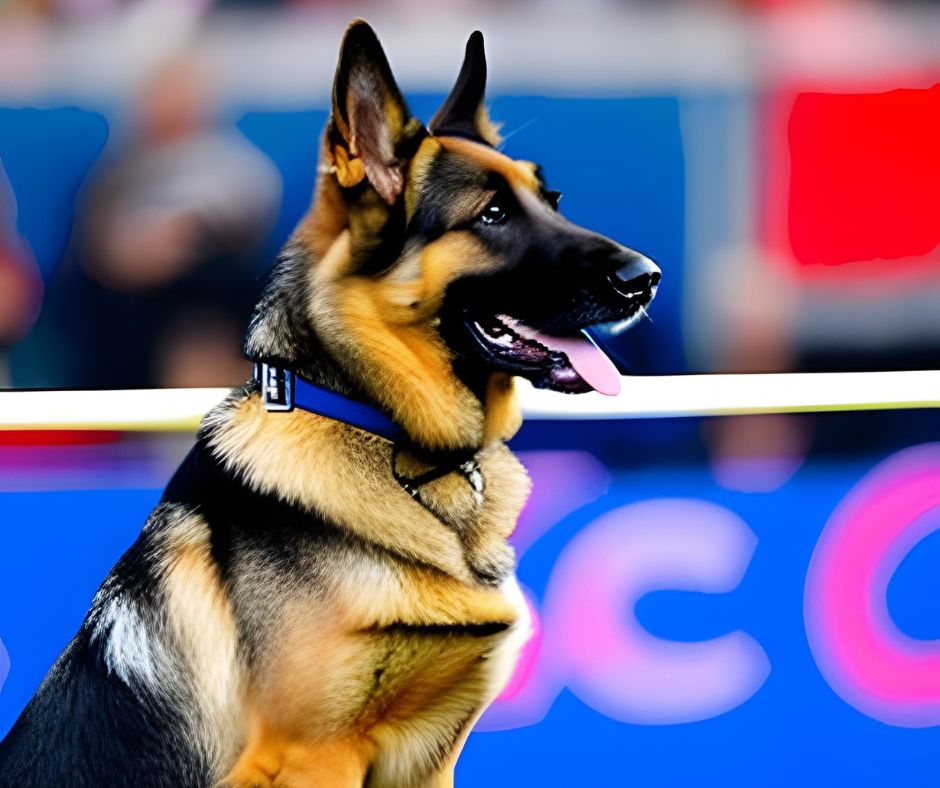
German Shepherds have faced scrutiny regarding certain breeding practices that prioritise aesthetics over health and functionality. Some breeders have focused on creating exaggerated physical traits, which can lead to health problems and compromise the breed’s working abilities.
It is essential for breeders and enthusiasts to engage in responsible breeding practices that prioritise overall health, temperament, and working capabilities.
A Healthy Breed? Addressing Health Issues like Hip Dysplasia
Like many large breeds, German Shepherds are susceptible to certain health conditions, with hip dysplasia being one of the most prevalent concerns. Hip dysplasia occurs when the hip joints don’t fit properly, leading to discomfort and reduced mobility.
Responsible breeding practices, regular exercise, and proper nutrition are essential in mitigating the risk of hip dysplasia and ensuring the German Shepherd’s long-term health.
Ethical Breeding and Ownership: A Call to Responsibility
Becoming a German Shepherd owner comes with the responsibility of providing proper care, training, and socialisation. Owning a dog with such intelligence and energy requires a commitment to mental and physical stimulation to prevent behavioural issues.
Additionally, adopting or purchasing from reputable breeders who prioritise the breed’s well-being ensures that the dog’s best interests are at heart.
Myths and Misconceptions: Separating Fact from Fiction
As with any popular breed, German Shepherds have been the subject of myths and misconceptions. Some people believe they are inherently aggressive, which is not true.
In reality, German Shepherds can be gentle, loyal, and affectionate companions when properly trained and socialised. Dispelling such myths is crucial to understanding and appreciating the German Shepherd’s true nature.
Being informed about the controversies and challenges surrounding German Shepherds empowers breeders, owners, and enthusiasts to make responsible decisions that prioritise the breed’s health, well-being, and overall positive impact on society.
Where Did the German Shepherd Come From?: Answering FAQs about their Origin

Where did the German Shepherd come from?
During the late 19th and early 20th centuries, German Shepherds originated in Germany. Breeders developed them as herding and working dog breeds, focusing on versatility, intelligence, and loyalty.
What was the original purpose of German Shepherds?
Breeders originally bred German Shepherds as herding dogs to assist with managing and protecting flocks. Their intelligence and herding instincts made them excellent at guiding and protecting livestock.
Who is credited with creating the German Shepherd breed?
Captain Max Emil Frederich von Stephanitz is credited with creating the German Shepherd breed. He founded the Verein für Deutsche Schäferhunde (Society for the German Shepherd Dog) in 1899 and played a pivotal role in establishing the breed’s standard and purpose.
How did German Shepherds gain popularity outside of Germany?
German Shepherds gained popularity internationally due to their exceptional performance as working dogs during both World Wars. Soldiers and military personnel from different countries witnessed their intelligence and bravery on the battlefield, leading to increased recognition and admiration for the breed.
What traits make German Shepherds suitable for various roles beyond herding?
German Shepherds possess a combination of traits that make them versatile for various roles. Their intelligence, trainability, courage, loyalty, and strong work ethic make them well-suited for police work, search and rescue, assistance for individuals with disabilities, and loyal family companions.
Are German Shepherds good family dogs?
Certainly! German Shepherds have the potential to be excellent family dogs. They are known for their loyalty and protectiveness towards their families and can also be good with children. Proper socialisation and training are essential to ensure they develop into well-mannered and well-adjusted family pets.
Are German Shepherds aggressive?
When properly bred, trained, and socialised, German Shepherds are not inherently aggressive. They are naturally protective of their families, which can be mistaken for aggression if not properly managed. Early socialisation and positive reinforcement training are essential to ensure a well-balanced and friendly German Shepherd.
What health issues are common in German Shepherds?
Like all dog breeds, German Shepherds can be prone to certain health issues. Frequent areas of concern encompass hip and elbow dysplasia, degenerative myelopathy, and specific genetic eye conditions. Responsible breeding practices, regular veterinary check-ups, and a healthy diet can help mitigate these risks.
What Breeds Did the German Shepherd Come From?
The German Shepherd breed is a product of careful and selective breeding. Captain Max von Stephanitz, the founder of the German Shepherd Dog, focused on herding dogs from different regions in Germany.
The Thuringian Shepherds, Wurttemberg, and Swabian service dogs were among the dogs he studied and incorporated into the breeding program. Through inbreeding and careful selection, he aimed to consolidate desirable traits and establish a unified breed with exceptional working abilities.
Who Was the First German Shepherd?
The first registered German Shepherd was a dog named Horand von Grafrath, also known as Hektor Linksrhein. Born in 1895, Horand became the foundation of the German Shepherd breed. Captain Max von Stephanitz acquired Horand due to his exceptional working abilities and striking appearance.
With careful breeding, Horand passed on his valuable traits, and his lineage laid the groundwork for the breed’s future development.
Reflecting on a Legacy: Conclusion

The Journey: Reflecting on Where Did the German Shepherd Come From?
As we wrap up our journey through the incredible history and evolution of the German Shepherd breed, I can’t help but feel a sense of awe and admiration for these remarkable dogs.
From their humble beginnings as herding dogs in Germany to becoming global icons of loyalty, intelligence, and courage, the German Shepherd has truly left its paw print on the world.
Throughout history, our furry companions have played vital roles as messengers, guards, and saviours on the battlefields. Their bravery and unwavering devotion to their human counterparts have earned them a well-deserved place as war heroes in our hearts.
A Lasting Impact: The Breed’s Legacy and Influence
But the German Shepherd’s talents don’t stop there! These versatile dogs have proven themselves time and again in various civilian roles, from working as police dogs to being expert search and rescue companions. Their ability to assist individuals with disabilities, like guiding the visually impaired, showcases their empathetic and compassionate nature.
Our furry friends have even made it big in Hollywood! Who could forget the legendary Rin Tin Tin, whose on-screen charisma made us all fall in love with the breed even more? Their enduring popularity is a testament to the German Shepherd’s timeless charm and lasting impact in pop culture.
Ethical Breeding and Ownership: A Call to Responsibility
As we reflect on this journey, let’s remember the importance of responsible breeding and ownership. Ensuring the health and well-being of our German Shepherds is crucial to preserving their exceptional qualities for future generations. Proper training, regular veterinary care, and a loving environment are all key ingredients in raising happy and well-balanced pups.
A Final Word: Appreciating and Respecting the German Shepherd
So, to all the German Shepherd lovers out there. You now know the answer to the burning question this post was about, where did the German Shepherd come from? So let’s continue to appreciate and respect these extraordinary dogs.
They’ve proven time and again that they are more than just companions; they are true members of the family, loyal, affectionate, and ready to stand by our side through thick and thin.
Here’s to the remarkable legacy of the German Shepherd breed, from the battlefields to our hearts! May their wagging tails and boundless love continue to brighten our lives for years to come. If you have any questions or would like to add anything further, please comment below.
